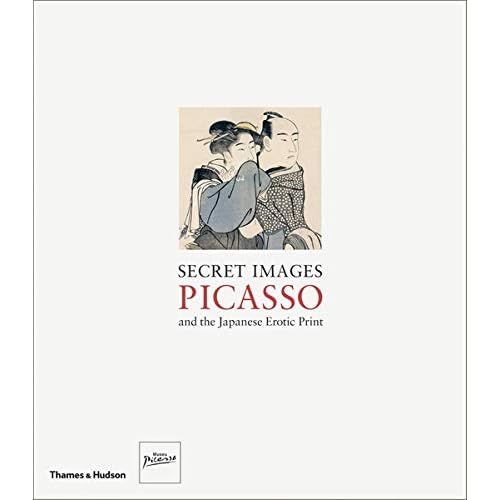Secret Images: Picasso and the Japanese Erotic Print
Category: Books,Arts & Photography,History & Criticism
Secret Images: Picasso and the Japanese Erotic Print Details
Review “This stunning book chronicles an important chapter in the history of explicit art.” - The Magazine (Santa Fe's Monthly) Read more

Reviews
For Picasso and Japanese Shunga collectors this book is a must. I was an admirer and collector of Picasso etchings for years until they became too expensive for me to afford. Then I accidentally discovered Japanese prints of “The Floating Garden” during the Edo Period. I immediately recognized many similarities with the Picasso etchings I’d been enjoying--it was stunningly obvious from images such as the 1966 “In the Limelight: Young Woman and Two Bearded Phalluses.” That particular image is typical of many Shunga Images completed in ancient Japan during the preceding centuries. While the over-all image of the two phalluses is inspired by Shunga, Picasso put his own visual comments inside the two erect penises, but even his symbolic messages would have been perfectly acceptable in the “The Floating Garden” art of Edo (now Tokyo). One of the two bearded erect penises contains a willing, subservient female nude.One of the answers I was seeking in this Picasso and Japanese Erotic Print book was information about the Picasso art drawings he made in 1903 on the back of postcards advertising the shop owned b the Juyner-Vidal brothers. I was disappointed to find so little information about these advertising cards for the Juyner-Vidal brothers. Picasso must have been getting paid for this handiwork, but how much, for how long and the story behind that commercial agreement was not discussed. I’ll have to keep seeking more information about that obscure and very rare Picasso work.The inventory of Pablo Picasso’s estate from 1976 specifies that the great painter owned about sixty Shunga images including some of the greatest examples of the art form. His friends also had access to other examples of the Japanese Pillow Books. They often shared their collections or knowledge of exhibitions that were being held locally because the Shunga exhibits were often kept secret from the general public.One of the surprises in this book is the absence of “Reclining-Nude-Private Collection” which is a color painting of an Octopus with huge eyes (the eyes doubling as breasts) holding a person in its tentacles. “The Dream of the Fisherman’s Wife” obviously influenced this creation. Since this book was published in 2010 the color painting apparently wasn’t recognized by the various book authors for the obvious influence of Japanese Shunga on Picasso. In the Picasso painting the original Shunga image of “The Dream of the Fisherman’s Wife” is instantly obvious. Only Picasso has reversed roles and the Octopus is a female that is devouring a male rather than the Shunga image of a male Octopus performing oral sex on a Japanese female pearl diver. Picasso liked reversing this Iconic image enough to paint it rather than just make a quick etching or sketch of the subject on the back of advertising cards for the Juyner-Vidal bothers.While the book leaves many unanswered questions, it is one of the few books that even discusses the subject.


